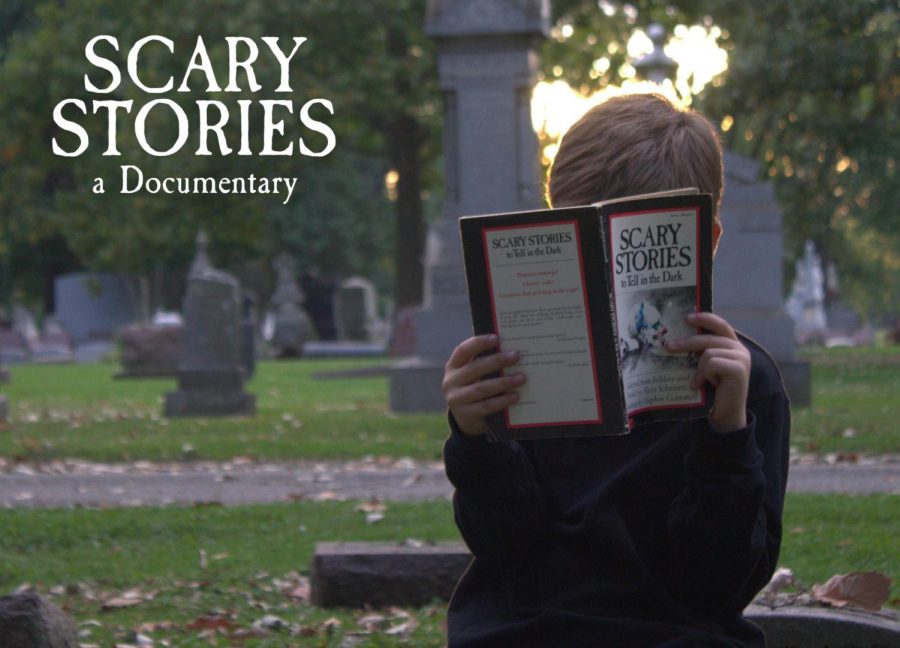‘Scary Stories’ documentary to be released in 2016
“Scary Stories,” a documentary by Chicago filmmaker Cody Meirick, focuses on the “Scary Stories to Tell in the Dark” trilogy by Alvin Schwartz. The film is set to be released in 2016 for the trilogy’s 35th anniversary.
November 30, 2015
“The Big Toe” is a popular American folklore tale about a boy who finds a human toe in his garden. After eating it for supper, the boy is haunted during the night by a man looking for his missing toe. This is just one of the many children’s stories in Alvin Schwartz’s “Scary Stories to Tell in the Dark,” a trilogy first published in 1981.
The stories grew to be popular in the ‘80s and ‘90s but were heavily censored and banned in many states for their horrific content and illustrations, according to Chicago filmmaker Cody Meirick, who is working on a documentary about the trilogy’s influence on children’s literature and censorship of banned books. The documentary is scheduled to be released in 2016 in honor of the trilogy’s 35th anniversary.
Schwartz died in 1992, mostly before his work appeared on the “challenged list” of the American Library Association in the ‘90s, according to a 1993 Chicago Tribune article about the author after his death.
Meirick, who has a background in children’s literature, wanted to make the documentary to highlight the importance of the genre and focus on Schwartz’s series because it was controversial.
“You have a book series that is arguably the most-banned book series of the last 30 years,” Meirick said. “They have been incredibly popular and have gotten a lot of kids reading over the years.”
Meirick said the documentary also focuses on the influential illustrations of the series by Stephen Gammell, and how folklore history is mixed with children’s books. He also interviewed family members of Schwartz to learn more about the stories.
“[I will] pivot toward censorship and use the series as an example of how books are banned,” Meirick said. “There are a lot of topics people have misconceptions about.”
He said he read the books when he was about 9 years old and got hooked on other scary tales, but they are not for all children. Meirick said he would not expose his 5-year-old son to them yet because he is not ready.
However, Meirick said there are ways to balance books without banning them or taking them out of school libraries, as many did when the series rose to popularity.
“There is a way to [talk about age-appropriateness] that is productive and doesn’t keep the books from kids that would benefit from [them],” Meirick said.
One such way is to have an open dialogue about the subject matter without hiding it from children, said Jack Campbell, a sophomore creative writing major who read the Schwartz trilogy when he was 6 years old.
“Being told that it’s going to be scary before it’s given to you is a good way to pull back that fear,” Campbell said, whose mother used to read him the stories before he could read for himself.
Mark Sutor, an audio engineer and composer for the documentary, said the element of fear is important in capturing the “Scary Stories” essence for the film’s score. He said it is an upbeat but gothic sound, keeping it scary but fun.
“[The books] played on the haunting, dark figure you’ see out of the corner of your eye,” said Sutor.
He said he had nightmares after reading the trilogy when he was younger, but working with Meirick revitalized his interest in the series.
Even nightmares did not stop Nicholas Abel, a sophomore creative writing major, from reading “Scary Stories” and asking his family to gift him the series when he was younger. Abel said the illustrations and stories gave him controlled fear and kept him constantly glued.
“I would spend half the time staring at the pictures, getting freaked out,” said Abel, who especially liked the visuals.
Abel said the idea of the books is scarier than the books themselves, thus creating a myth about their fear. He said he has memories attached to them that are shared among others from his generation.
“If I mention the ‘Scary Stories’ books, [my peers] immediately understand it,” Abel said, adding the series has broken down literature barriers for children’s content.
“They were profoundly inspirational to a lot of kids’ lives,” he said.








